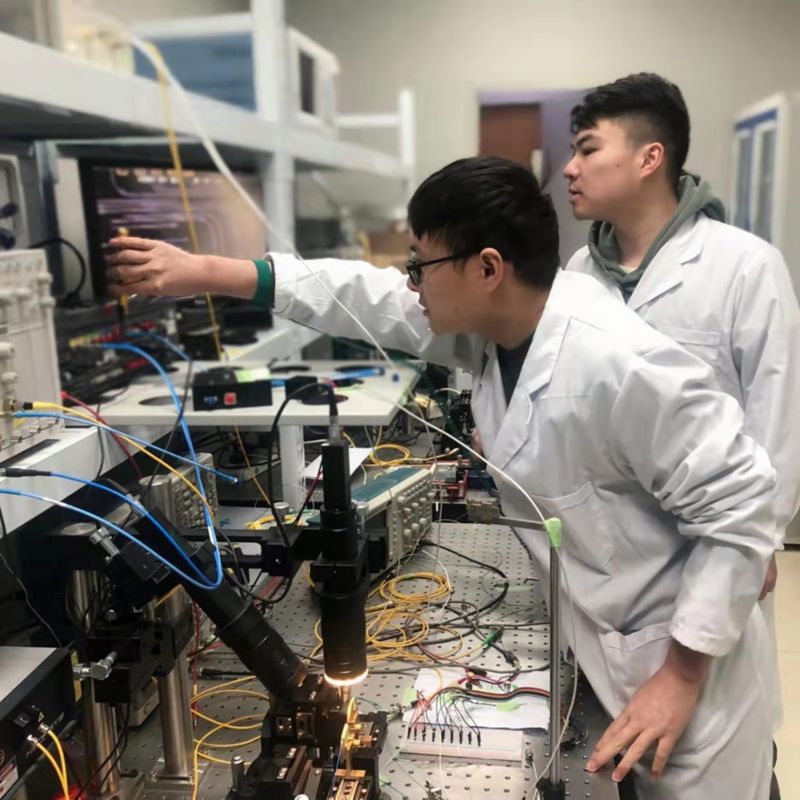
It’s predicted that by 2022, the world’s internet traffic will reach 4.8 zettabytes (or 700 billion Blu-ray discs). This puts more and more pressure on our internet infrastructure to carry more data, all with the need to consume less energy.
In collaboration with researchers from Lanzhou University in China, we experimented with two novel approaches that could lessen the data burden on the optical networks that underpin our internet.
One approach is the combination of two powerful materials – silicon nitride and lithium niobate – to make fabrication easier and data transfer amounts larger. The other novel approach is multiplexing – a technique that allows rapid transmission of data along multiple channels at the same time.
The team were able to create a commercially available chip, capable of accurate and rapid data transfer. This finding also appeared in an article on the front cover of the January 2022 edition of the Laser and Photonics Reviews journal.
This paves the way to keep up with our demand for ever-faster internet transmission to future-proof our infrastructure for years to come.
Working with InPAC is lifting our work to a new height, everyone in the team has made an important contribution to the final results, the solid and active collaborations between us promote the smooth completion of this project.
- Lead author Xu Han, Lanzhou University

Aug 2018: Collaboration began with Lanzhou University and Integrated Photonics and Applications Centre
May 2021: Research project began
June 2021: Device design and fabrication
Aug 2021: Device measurement
Oct 2021: Draft research journal article sent for publication
Jan 2022: Research published in Laser and Photonics Reviews journal
Read more about the research at https://onlinelibrary.wiley.com/doi/10.1002/lpor.202270001


RMIT University acknowledges the people of the Woi wurrung and Boon wurrung language groups of the eastern Kulin Nation on whose unceded lands we conduct the business of the University. RMIT University respectfully acknowledges their Ancestors and Elders, past and present. RMIT also acknowledges the Traditional Custodians and their Ancestors of the lands and waters across Australia where we conduct our business - Artwork 'Sentient' by Hollie Johnson, Gunaikurnai and Monero Ngarigo.
Learn more about our commitment to Indigenous cultures